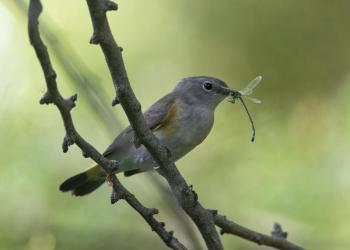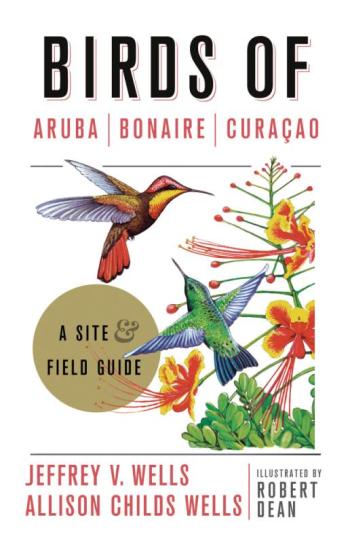Many long-time readers of this column will remember that we have an abiding interest in the islands of Aruba, Curaçao and Bonaire—three islands off the Venezuelan coast that were historically once collectively known as, along with several other islands, the Netherlands Antilles. While each island now has its own government, each retains some kind of connection to the Dutch (Netherlands) government, though it is unique in each case.
As leaves disappear off the trees and temperatures drop here in Maine, we begin thinking about the birds that have migrated south and may be passing through these islands. Just in the past few weeks, birders on Aruba have found returning blue-winged teal, belted kingfishers, osprey, and lesser yellowlegs enjoying the heat and the shallow saliñas on the western part of the island and in birding hotspots like the Bubali wetlands. They’ve spotted northern waterthrushes, American redstarts, blackpoll warblers, and yellow-billed cuckoos in the shrubby buttonbushes surrounding wetlands and in coastal mangroves at locations like Spanish Lagoon. In many places along the Aruban coast, birders there have seen royal terns flashing white and gray as they stroked by, and frumpy brown pelicans diving for fish in shallow turquoise waters.
These are all bird species that nest in the U.S. and Canada and migrate south to places like Aruba, Bonaire, and Curaçao (and beyond) for the winter. Without healthy habitats along their migratory routes that provide food, water, and safety from predators, these birds could not survive. And there are many difficult pressures on such habitats on small tourism-centric islands like these ones.
That’s why we were so excited to learn this week that four new areas on Aruba have just been officially designated as wetlands of international significance under the so-called Ramsar Convention. Another, Spanish Lagoon, has had its original borders expanded to include the broader watershed surrounding the lagoon.
Much of Aruba’s coastline and nearshore waters, including its famous coral reefs, are included in these new Ramsar sites. These regions are incredibly important for marine fish that so many seabirds rely on and for a number of species of sea turtles and dolphins. Most of the top sites for birds on the island are included within these new RAMSAR sites.
Aruba has some globally significant tern nesting areas that are included in one of the Ramsar-designated sites. These nesting islands support an impressive diversity of species including an unusual yellow-billed form of the sandwich tern (known as “cayenne” tern), royal terns, roseate terns, common terns, least terns, sooty terns, bridled terns, brown noddies, and black noddies. These birds all travel offshore to the marine areas to feed, so the designation of the Ramsar sites to include their nesting and feeding areas is critical.
We expect and hope that the designation of these sites as globally significant will spur on further efforts at conservation and management that will benefit birds and other wildlife and plants, and for maintaining a healthy place for the people of Aruba and the visitors who enjoy its natural beauty. You can see more about the designations by clicking here. https://www.ramsar.org/news/four-new-wetlands-international-importance-aruba.
We are proud to say that our book, “Birds of Aruba, Bonaire, and Curaçao” (Cornell University Press 2017), along with serving as an excellent field guide and site guide, contains an extensive chapter about conservation on the islands. One of the hopes we expressed in that chapter was for protections of many of the places that have now been recognized as Ramsar globally significant wetlands. We are particularly encouraged by this news.
If you are (or someone you know is) thinking about a visit to any of these islands or just want to learn more, consider picking up a copy of our book through your local bookseller or online. It makes a great holiday gift! And with this recent designation of four new and one expanded Ramsar wetlands of international significance, there is renewed hope that the birds and other wildlife will continue to be something to see.
Jeffrey V. Wells, Ph.D., is a Fellow of the Cornell Lab of Ornithology and Vice President of Boreal Conservation for National Audubon. Dr. Wells is one of the nation's leading bird experts and conservation biologists. He is a coauthor of the seminal “Birds of Maine” book and author of the “Birder’s Conservation Handbook.” His grandfather, the late John Chase, was a columnist for the Boothbay Register for many years. Allison Childs Wells, formerly of the Cornell Lab of Ornithology, is a senior director at the Natural Resources Council of Maine, a nonprofit membership organization working statewide to protect the nature of Maine. Both are widely published natural history writers and are the authors of the popular books, “Maine’s Favorite Birds” (Tilbury House) and “Birds of Aruba, Bonaire, and Curaçao: A Site and Field Guide,” (Cornell University Press).



























